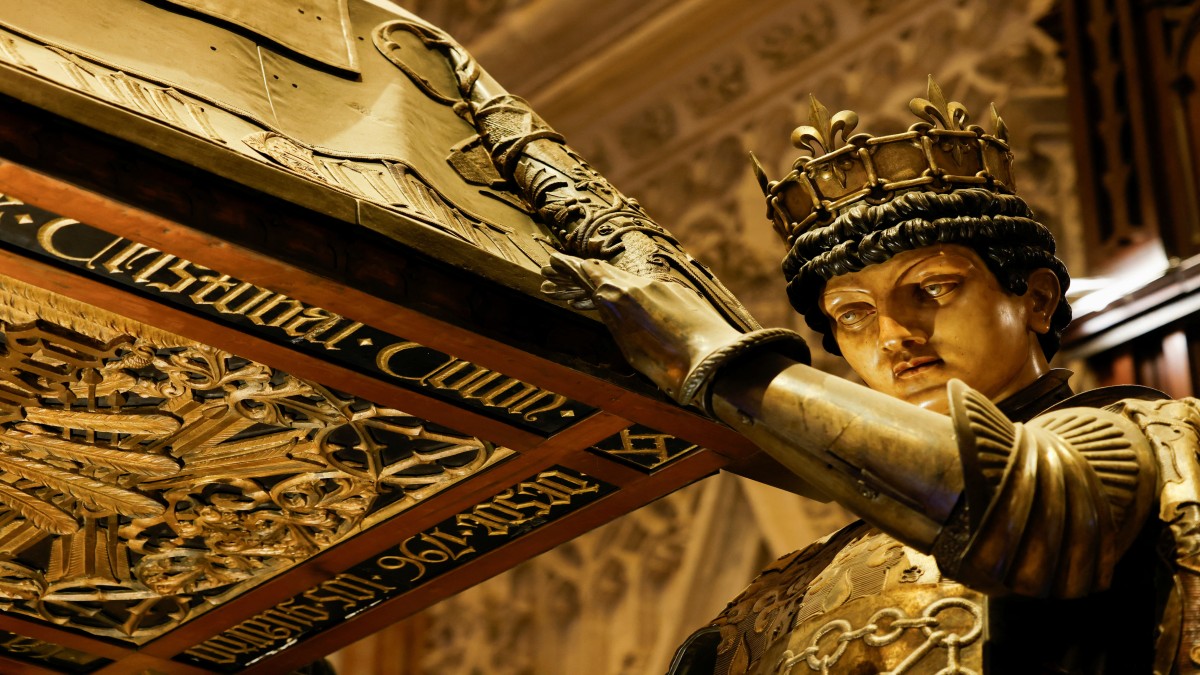A long-standing mystery about the nationality of renowned explorer Christopher Columbus has finally been solved.
He was probably Spanish and Jewish, according to a recent DNA study by Spanish researchers.
The official resting place of the man who is known to have “discovered” America is located in Spain.
Let’s take a look.
Mystery solved
According to scientists, the 15th-century explorer, whose voyage over the Atlantic in 1492 altered the path of history, was a Sephardic Jew and most likely born in western Europe, most likely in Valencia.
The word Sephardic comes from Sefarad or Spain in Hebrew.
They believe that to avoid religious persecution, he either converted to Catholicism or hid his Jewish identity.
For those uninitiated, around 300,000 Jews lived in Spain before the “Reyes Catolicos,” Catholic monarchs Isabella and Ferdinand, ordered Jews and Muslims to convert to the Catholic faith or leave the country.
Many settled around the world.
His origins and final resting location have been disputed by several nations, several of which claim him as their own.
He is also thought to have been born in Poland, Great Britain, Greece, Portugal, Hungary, and Scandinavia, according to an estimated 25 competing theories.
A traditional theory that says Columbus was born in 1451 in Genoa, Italy, into a family of wool weavers, is refuted by the latest DNA research.
Impact Shorts
More ShortsThe study
The new study has been conducted for more than two decades.
The findings of the research were announced on Saturday night during a special programme shown on the national broadcaster, RTVE, to coincide with Spain’s national day, which commemorates Columbus’s arrival in the New World on 12 October 1492.
The study started in 2003 when historian Marcial Castro and José Antonio Lorente, a forensic medicine professor at Granada University, dug out what were thought to be Columbus’ remains from Seville Cathedral.
To solve the mystery, researchers tested tiny samples of remains buried in Seville Cathedral, long marked by authorities there as the last resting place of Columbus, though there had been rival claims.
They compared them with those of known relatives and descendants.
“We have DNA from Christopher Columbus, very partial, but sufficient. We have DNA from Hernando Colon, his son,” Lorente said in the programme, adding, “And both in the Y chromosome (male) and in the mitochondrial DNA (transmitted by the mother) of Hernando there are trait compatible with Jewish origin.”
Although Lorente admitted that he had not been able to determine Columbus’s birthplace, he stated that it was likely that Columbus originated in the Mediterranean region of Spain.
“The DNA indicates that Christopher Columbus’s origin lay in the western Mediterranean. If there weren’t Jews in Genoa in the 15th century, the likelihood that he was from there is minimal. Neither was there a big Jewish presence in the rest of the Italian peninsula, which makes things very tenuous,” he said, as per The Guardian.
According to Lorente, the search became even more limited because there were no conclusive theories or clear evidence that Columbus might have been French.
“We’re left with the Spanish Mediterranean area, the Balearic islands and Sicily. But Sicily would be strange because then Christopher Columbus would have been written with some trace of Italian or the Sicilian language. That all means that his most likely origin is in the Spanish Mediterranean area or the Balearic islands which belonged to the crown of Aragón at the time.”
Lorente landed in Western Europe after studying 25 potential locations and narrowing it down to eight.
Research on Columbus’ nationality was complicated by a number of factors, including the large amount of data. But “the outcome is almost absolutely reliable,” Lorente said.
Experts opinion
Experts have responded to the historical findings with caution.
“Unfortunately, from a scientific point of view, we can’t really evaluate what was in the documentary because they offered no data from the analysis whatsoever,” Antonio Alonso, a geneticist and former director of Spain’s National Institute of Toxicology and Forensic Sciences told El País, adding, “My conclusion is that the documentary never shows Columbus’s DNA and, as scientists, we don’t know what analysis was undertaken.”
Archaeogenetics specialist Rodrigo Barquera of the Max Planck Institute for Evolutionary Anthropology was surprised that the results had been released without first being reviewed by other scientists.
“Normally, you send your article to a scientific journal. An editor is then assigned to the piece and at least three independent reviewers examine the work and decide whether it’s scientifically valid or not. If it is, it gets published and so the rest of the scientific community can say whether they agree with it or not. Putting it on the screen, far from that dialogue and with all this media focus gets in the way of the scientific community being able to say something about it,” he told El País.
Lorente responded to the criticism, saying, “Our team and the university have always considered this study into Christopher Columbus and his family as a single, joined-up and inseparable unit, and nothing will be published until the investigation is completed.”
About Columbus
Columbus led an expedition that was supported by the Catholic monarchs of Spain in an attempt to find a new path to Asia, but he ended himself in the Caribbean.
With his arrival, Europeans began a period of contact with the Americas that would result in conquest, settlement, and the deaths of millions of indigenous people due to war and disease.
Columbus died in Valladolid, Spain, in 1506, but wished to be buried on the island of Hispaniola which is today shared by the Dominican Republic and Haiti.
His remains were taken there in 1542, then moved to Cuba in 1795, and then brought to Seville in 1898 when Spain lost control of Cuba after the Spanish-American war.
With inputs from agencies


)

)
)
)
)
)
)
)
)



